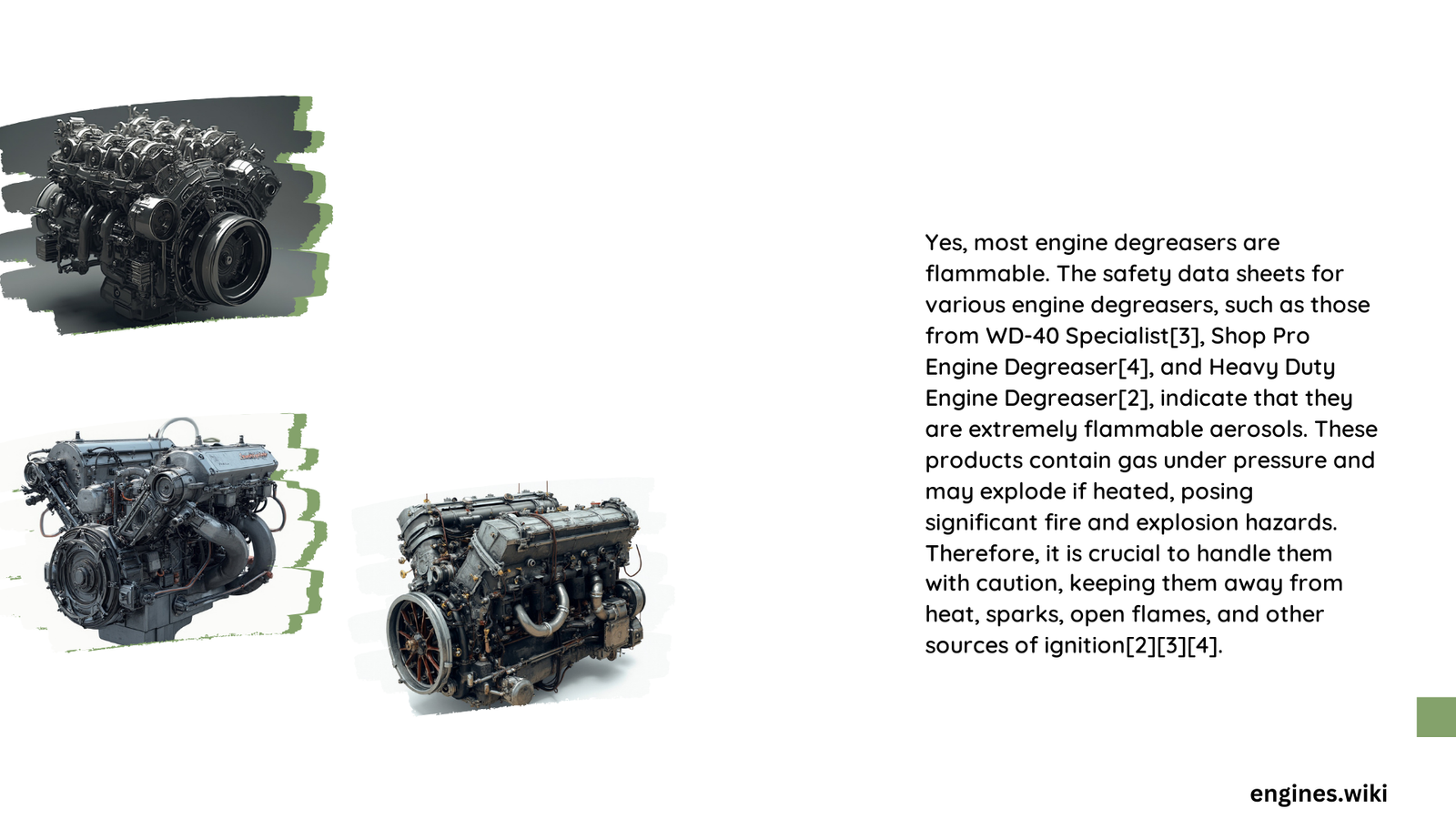Engine degreasers are complex chemical solutions with varying flammability characteristics that can pose significant safety risks. Most solvent-based engine degreasers contain highly combustible ingredients with low flash points, making them potentially dangerous near heat sources, sparks, or open flames. Understanding their chemical composition, flash point, and proper handling techniques is crucial for preventing workplace accidents and ensuring personal safety during automotive maintenance tasks.
What Makes Engine Degreasers Potentially Flammable?
Chemical Composition and Fire Risk
Engine degreasers typically contain volatile organic compounds (VOCs) that contribute to their flammability. These solvents can rapidly produce combustible vapors under specific temperature conditions.
Key Flammability Factors
- Flash Point: Temperature at which vapors can ignite
- Vapor Density: Concentration of combustible gases
- Solvent Type: Hydrocarbon-based ingredients increase fire risk
Comparative Flammability Analysis
| Degreaser Type | Flammability Risk | Typical Flash Point |
|---|---|---|
| Solvent-Based | High | Below 140°F (60°C) |
| Water-Based | Low | Above 200°F (93°C) |
| Synthetic | Moderate | 140-200°F (60-93°C) |
How Can You Identify Flammable Engine Degreasers?

Safety Data Sheet (SDS) Indicators
- Look for “Flammable Liquid” classification
- Check specific hazard statements (H227, H225)
- Review recommended storage and handling procedures
Warning Signs of High Flammability
- Strong chemical odor
- Rapid evaporation
- Thin, transparent liquid consistency
- Petroleum-based ingredients
What Precautions Should You Take?
Personal Safety Recommendations
- Work in well-ventilated areas
- Keep away from ignition sources
- Use flame-resistant protective equipment
- Store in approved, sealed containers
- Have fire extinguisher nearby
Recommended Safe Handling Practices
- Avoid smoking near degreasing area
- Disconnect electrical equipment before cleaning
- Use non-sparking tools
- Wear protective gloves and eye protection
- Dispose of contaminated materials properly
Are All Engine Degreasers Equally Dangerous?
Risk Variation by Formulation
Not all engine degreasers present identical fire hazards. Water-based and synthetic formulations generally offer lower flammability compared to traditional solvent-based products.
Comparative Risk Assessment
- High Risk: Petroleum-based solvents
- Moderate Risk: Synthetic chemical blends
- Low Risk: Water-based degreasers
Professional Recommendations
Expert Safety Tips
- Always read manufacturer instructions
- Select lowest-risk degreaser for specific application
- Prioritize workplace ventilation
- Invest in proper personal protective equipment
- Consider professional cleaning services for complex tasks
Conclusion
Understanding engine degreaser flammability requires careful analysis of chemical properties, handling techniques, and potential risks. By implementing proper safety protocols and selecting appropriate products, automotive professionals and enthusiasts can minimize potential hazards.
Quick Safety Checklist
- ✓ Verify product flammability rating
- ✓ Ensure proper ventilation
- ✓ Use appropriate protective gear
- ✓ Store safely away from heat sources
Warning
Caution: Always treat engine degreasers as potentially dangerous chemicals and follow manufacturer guidelines precisely.
